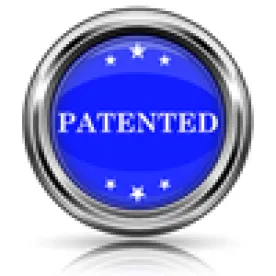Takeaway: A wherein clause is given patentable weight if the clause states a condition that is material to patentability.
In its Final Written Decision, the Board found that all challenged claims (15-19) of the ’832 Patent are unpatentable. The ’832 Patent generally “relates to compositions and methods for treating narcotic dependence using an orally dissolvable film comprising buprenorphine and naloxone, wherein the film provides a bioequivalent effect to Suboxone®.” “The ’832 patent defines bioequivalent as ‘obtaining 80% to 125% of the Cmax and AUC values for a given active in a different product.’” “According to the ’832 patent, ‘Cmax refers to the mean maximum plasma concentration after administration of the composition to a human subject,’ and ‘AUC refers to the mean area under the plasma concentration-time curve value after administration of the compositions.’”
The Board began with claim construction, stating that terms are interpreted according to their broadest reasonable interpretation in light of the specification. In its Decision to Institute, the Board concluded that “film formulation” includes film dosage, film composition, or film but not a formulation that is not in the form of a film. Neither party disputed this construction, thus the Board maintained it.
Patent Owner presented arguments in its Response that related to construction of two additional terms, namely that the wherein clause of claim 15 is entitled to patentable weight (in contradiction to the position taken by Petitioner) and that “the challenged claims should be construed as requiring a film formulation that provides, and as reciting pharmacokinetic ranges resulting from, oral transmucosal absorption.”
With regard to the wherein clause, the Board noted that a “wherein clause is not given patentable weight if it merely expresses the intended result of a process[, but] when the wherein clause states a condition that is material to patentability, it cannot be ignored.” In this case, the Board found that “a film formulation that meets the requirements of claim 15 must be capable of producing the pharmacokinetic profile recited in the wherein clause of the claims.” Petitioner did not contend that all orally dissolving films comprising buprenorphine and naloxone would be capable of producing the pharmacokinetic profile. Accordingly, the Board found that the wherein clause recited a necessary property of the claimed formulation, and thus is a meaningful limitation that is entitled to patentable weight.
With regard to whether the claims require “oral transmucosal absorption,” the Board notes that the words of the claims themselves define the scope of the patented invention and that the claims do not recite the requirement urged by Patent Owner. The Board determined that the specification does not require this limitation, only prefers or desires it. For example, the specification recites that an “orally dissolvable film” is “preferably administered to a patient through the oral cavity of the patient, but may be administered in any desired means.” The Board interprets such a statement in the specification as a suggestion that the film can be administered through routes other than the oral cavity. The Board was also not persuaded by Patent Owner’s expert’s opinions on whether the orally dissolvable film of the invention could be administered in other ways than through the oral cavity of the patient. Accordingly, the Board declined “to construe the challenged claims as requiring oral transmucosal absorption, because the challenged claims do not explicitly recite such a limitation, and because neither the ’832 patent nor any other evidence Patent Owner relies on sufficiently demonstrates otherwise.”
The Board then reviewed the asserted grounds of unpatentability, beginning with anticipation by Labtec. Patent Owner argued that Labtec fails to disclose films providing absorption through oral transmucosal absorption; that Labtec does not disclose an embodiment of the claimed film itself; and that Labtec is not an anticipatory reference because it fails the enablement requirement. For the reasons presented above, the Board did not construe the claims to require oral transmucosal absorption, and thus that argument failed.
With regard to Labtec not disclosing an embodiment of the claimed film, the Board noted that “anticipation does not require actual performance of suggestions in the disclosure.” In this case, the Board found that:
Labtec lists Suboxone® in Table A as a drug of interest, and describes an oral film that mimics the pharmacokinetics of Suboxone®. Labtec describes that the film formulation comprises buprenorphine and naloxone, as recited in claim 15. It states that buprenorphine is to be dosed at 4–16 mg/day. Cmax is 1.84 and 3.0 ng/ml and AUC0-48 is 12.52 and 20.22 hr.ng/ml, for 4 mg and 8 mg buprenorphine, respectively. Labtec further states that “[m]ean peak naloxone levels range from 0.11 to 0.28 ng/ml in dose range of 1–4 mg.
The Board found that this description amounts to a constructive reduction to practice that describes an oral film having each and every element of the claims.
With regard to whether Labtec is enabling, the Board explained that the evidence of record supports Petitioner’s position that “the bioavailability of orally administered buprenorphine overlaps with that of sublingually administered Suboxone® tablets.” Accordingly, the Board found that regardless of whether Labtec is limited to providing GI-tract absorption only, it was not persuaded that Labtec is not enabled with respect to buprenorphine. The Board also agreed with Petitioner that Labtec was not restricted to GI-tract absorption, and that the active pharmaceutical ingredient of the film is also absorbed through the oral mucosa. Accordingly, the Board concluded that Labtec anticipates claims 15-19 by disclosing an oral film comprising buprenorphine and naloxone with the pharmacokinetic profiles recited in those claims. The Board also concluded for similar reasons that Labtec in combination with Birch and Yang renders claims 15-19 obvious.
Biodelivery Sciences International, Inc. v. RB Pharmaceuticals Limited, IPR2014-00325
Paper 43: Final Written Decision
Dated: June 30, 2015
Patent 8,475,832 B2
Before: Toni R. Scheiner, Jacqueline Wright Bonilla, and Zhenyu Yang
Written by: Yang



 />i
/>i

